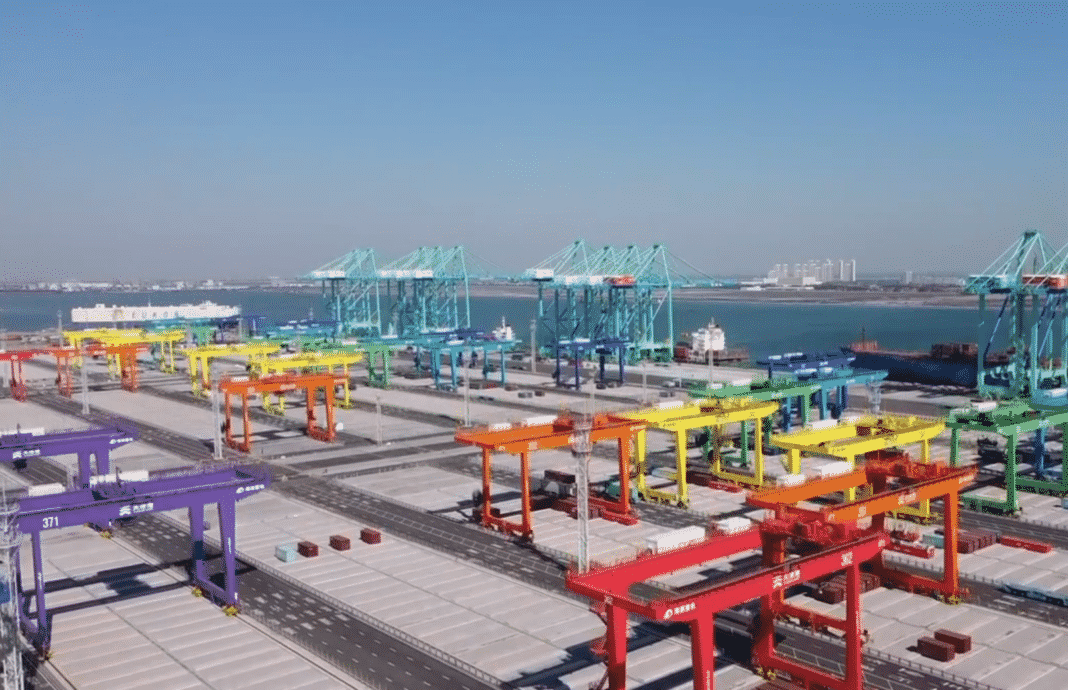China has opened the world’s 1st zero-carbon container terminal in Tianjin, saving manpower, time, and costs.
It’s a 200,000-ton container terminal, with room for 2.5 million twenty-foot containers to pass through annually. Construction of the Tianjin Port took 21 months.
The Zero-Carbon Technology Being Used in Tianjin Port
Tianjin Port is the world’s first smart, zero-carbon terminal with an “intelligent brain.” The technology is different from other automatic container terminals since wind turbines, and photovoltaics are on site. This allows the terminal to use its own electricity. The result? Zero-carbon emissions.
Regarding its creation, Liu Xiwang, Deputy Manager of Information Department of Tianjin Port Second, said that “We have independently developed an intelligent horizontal transportation system, also known as the ‘central control brain,’ to be responsible for the unified command and dispatch of 76 intelligent horizontal transportation robots in the terminal for fully automated container handling.”
He went on to say that the “brain” uses advanced algorithms to map out the optimal driving path and speeds – knowing when to accelerate, decelerate and overtake.
Essentially, the AI system can provide loading and unloading plans and control equipment, driving efficiency, and positioning. This is done through laser radars, cameras, and millimeter-wave radars.
What Tianjin Port Means for Global Net-Zero Goals
The Paris Agreement, as well as COP26, have encouraged governments and companies to go green. The voluntary carbon marketplace is booming because of it, reaching $100 billion this year (compared to $300 million in 2018).
Experts expect the carbon credit industry to reach $22 trillion by 2050.
Many companies have opted to offset their emissions through the carbon marketplace since they do not have the technology to reach net-zero (yet). So, purchasing offsets can help them meet climate goals as they work to achieve what Tianjin Port has.
With advances in technology, carbon credits, and increased regulation, it is possible to offset and reduce carbon emissions to achieve green objectives.

